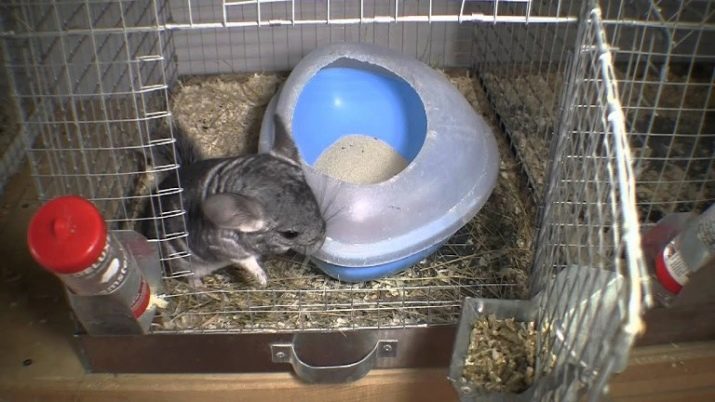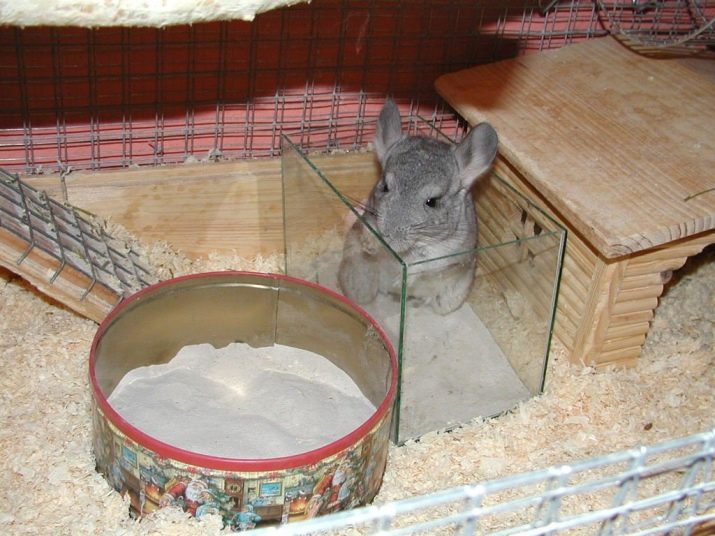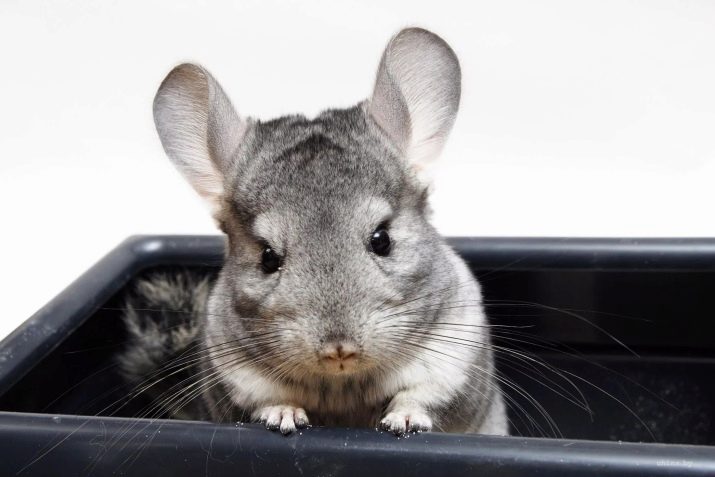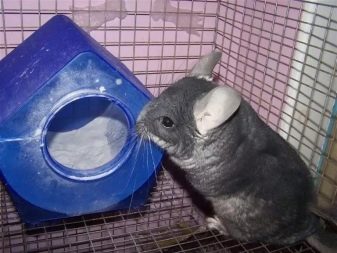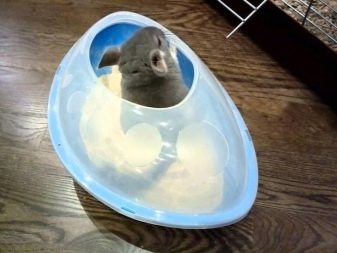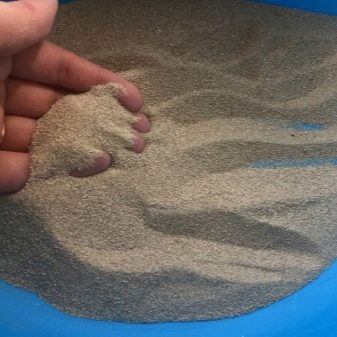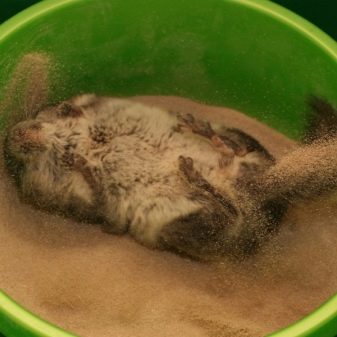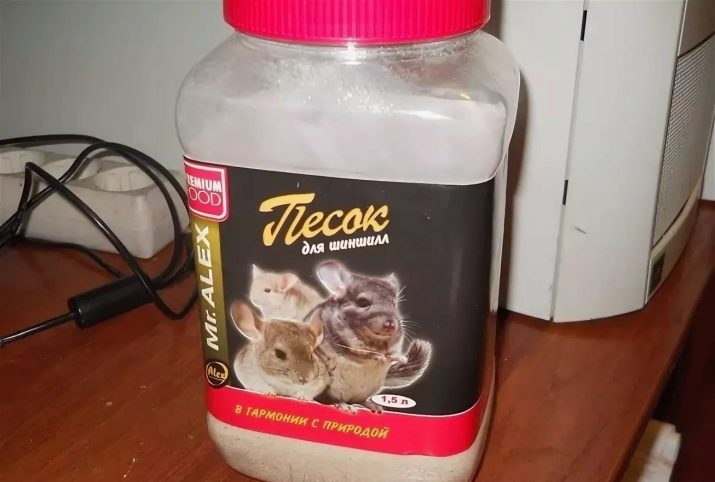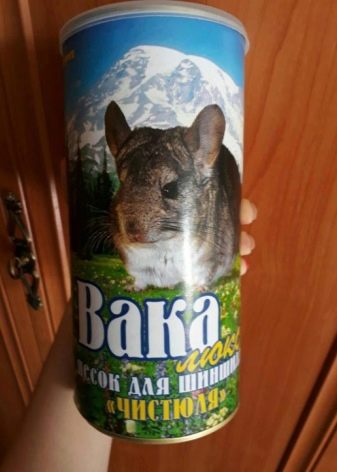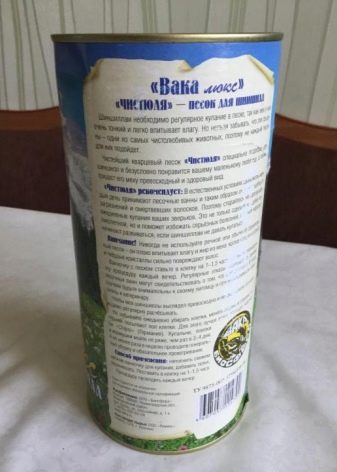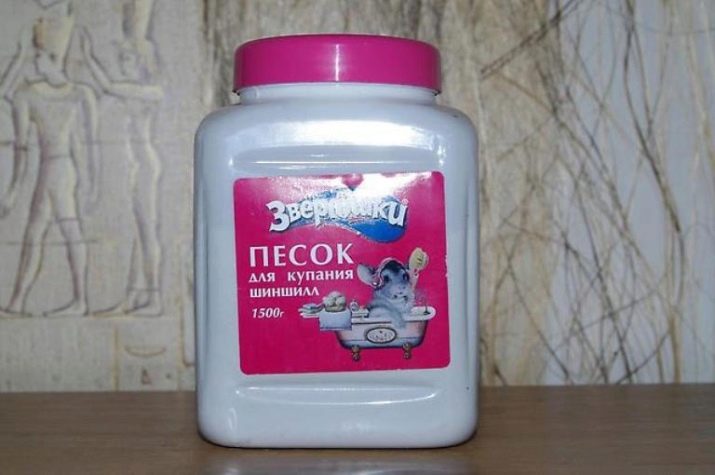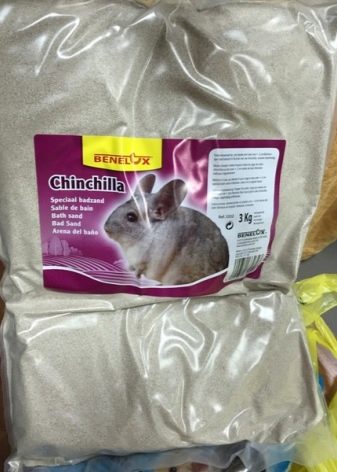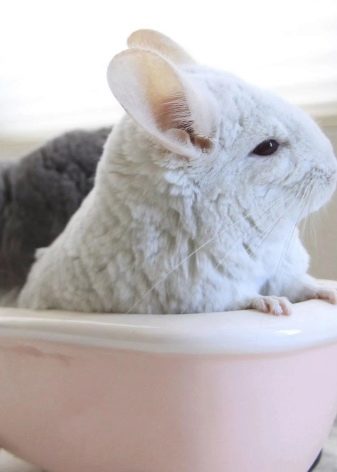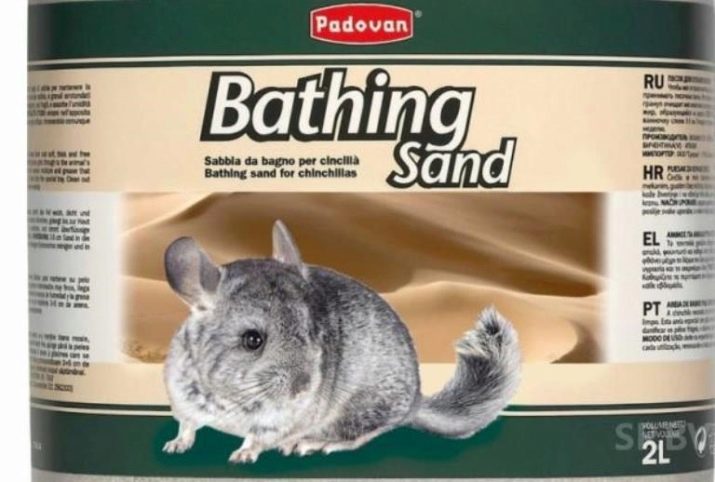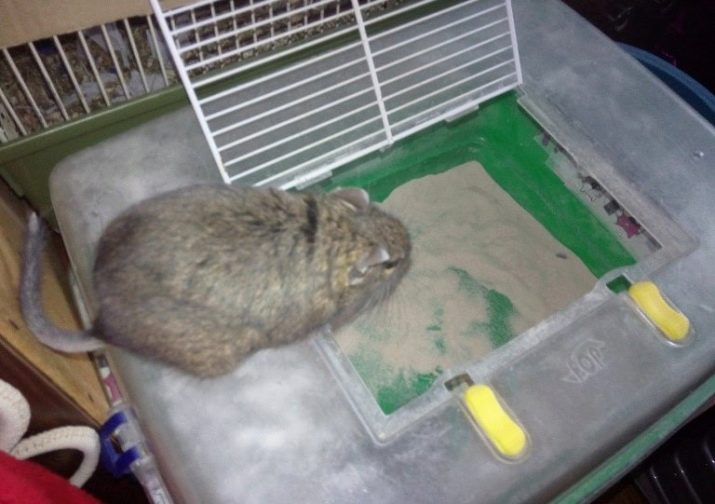Responsible owners of chinchillas know that the lives of their pets will not be comfortable without bathing in the sand. To do this, it is necessary to periodically purchase specialized sand at the pet store. For those who recently acquired a fluffy friend, we will tell you about the need to purchase this product.
Why do you need
For people and animals is considered the norm to swim in the water, but such unusual animals as chinchillas, went a more difficult way, and prefer in nature to take bath procedures in volcanic sand. Sand bath becomes a complete replacement for standard water. So that at home, the fur of these rodents looked clean and well-groomed, you need to bathe them in the sand.
One square centimeter of chinchilla fur coat contains about 300 bunches of 80 hairs, and therefore this animal is considered to be the leader in fur density. Moisture, grease forms in the hairs, and skin secretions accumulate in bundles. Grains of sand, falling on the wool, absorb all the moisture. In addition, taking a sand bath, chinchillas feel very comfortable, they perceive the procedure as a game.
Classical bathing in the water for this animal is not suitable, since the dense wool will dry out for a long time and can provoke putrefactive processes, which can detrimentally affect the health of the animal.
In this regard, each the owner must take security measures while walking the pet around the apartment: close all the rooms where there may be water (bathroom, toilet), clean the buckets and pots with water away.
Composition
Regular quartz or river sand is not suitable for bathing a rodent, as it has a rather large fraction. Such sand does not penetrate into the wool, and getting on the skin of an animal can scratch it. In addition, the sharp edges of quartz grains will lead to a cross section of hairs and may become entangled in them. But the greatest harm of such sand is related to its composition. It may contain elements dangerous to the animal. Ground quartz can only complement the sand mixture.
For swimming chinchillas suitable specialized volcanic sand, which these animals and use in natural conditions. Volcanic particles are quite small, like dust, they easily penetrate into the wool and absorb moisture. These grains of sand are also quickly removed without harming the fur and the skin of the animal.
The composition of specialized sand most often includes volcanic dust, sepiolite, zeolite and talcomagnesite. Pure volcanic dust is a good option, but it costs too much, and therefore manufacturers use other additives in their composition, which are as close as possible to the natural product.
Zeolite is often used when bathing farm chinchillas, since its moisture absorption properties are determined by the level of humidity in the room. This substance is characterized by high dustiness, and therefore it is customary to dilute it with ordinary sand. Sepiolite and talcomagnesite have a porous structure, therefore the properties of these substances include hydrophilicity and high-quality water absorption.
Sometimes, quartz is ground at the basis of the mixture, and then the product includes additives that can improve the absorption of moisture. A common element in the bathing sand is talc. It absorbs water well, and also eliminates unpleasant odors.In addition, talc is a good remedy for fungus, which usually qualitatively protects the pet's skin, especially if used in combination with sulfur.
On the basis of these substances, for example, the drug Fungistop is proposed, which can be added to sand for bathing chinchillas.
How to choose
The grooming and cleanliness of the fur of a furry friend largely depends on the quality of the sand being bought, and therefore the choice of this product should be taken responsibly. As already mentioned, pure quartz sand is not suitable because of too large grains of sand, so give preference to volcanic species that include sepiolite or zeolite. To determine the quality of sand, as well as to distinguish volcanic products from quartz, conduct simple experiments.
- Consider a pinch of sand in the palm of your hand.. Sands should be matte. Seeing that the particles shine slightly, you can pass by the product - in front of the buyer quartz. Rub the sand between your fingers. If you feel a tingling sensation, then you should give up this product. If the product is of high quality, it will leave behind a light powdery mark on the skin.
- Dampen some sand. If the resulting substance resembles clay, slightly viscous and viscous, then this sand is suitable for bathing chinchilla.
- Fill a couple of tablespoons of sand with water in a transparent container.. If the grains of sand immediately fell to the bottom, then it is quartz. If the particles float on the surface, but gradually settle, then this is volcanic sand, which must be chosen.
Among the manufacturers of bathing sand, the following companies are currently enjoying popularity, having both pluses and minuses.
Mr Alex. The quality is average, as the product is based on quartz. To mitigate its impact, the package includes a bag of talcum, which must be added to the bath when bathing an animal.
- Lolopets. At the heart of volcanic dust and crushed quartz, processed at 400 degrees. The advantage of the product is affordable price.
- "Vaca". A volcanic product supplemented with quartz. The set includes talc. According to the owners, grains of sand can be quite large, and therefore it is better to sift the goods before use.
- "Little Animals". The mixture is based on talcomagnesite. Users characterize the product as quite good, it maintains the good condition of the pet's coat and does not dry the skin.
- Little One. Volcanic mixture, characterized by excellent quality, but rather high cost.
- Benelux. Products developed on the basis of crushed zeolite. Differs in good functionality, but has a high price.
- Padovan. It consists of crushed zeolite (60%) and other elements with excellent hydrophilic properties.
- Vitacraft. It is based on crushed sepiolite and other volcanic substances. The most preferred option, although expensive.
Do not be afraid of prices for high-quality sand, as the cost itself is justified. A good product not only effectively cleans the pet's hair, but is also more economical to use, since it needs to be changed less often than cheap options.
How to use
Having bought quality sand for swimming, it is important to know how to use it properly. Use the following recommendations from chinchilla breeders.
- Put sand in the bath so that it hides the bottom of 5-7 cm in height.
- The maximum number of sand baths per week is three. The duration of one procedure is 30–60 minutes. Time depends on the desire of the animal to swim. If the animal does not crawl out of the bathroom for the first 20 minutes, then half an hour is enough for it. If in an hour he spent only a couple of minutes in the pool, then leave the sand in the cage for a while.
- Do not exceed the amount of time indicated and the number of weekly procedures. If you overdo it with bathing sessions, the pet's skin may dry up, there will be cracks on it. The rodent will itch all the time, feel itchy and feel uncomfortable.All this will lead to stress, which, in turn, can provoke illness.
- After the bathing procedure, check the container for the presence of foreign debris, remove it. To facilitate the procedure, sift the sand. Completely sand needs to be changed every three months.
- If the bathing with sand is always in the cage of a pet, then the contents should be replaced after 15 bathing procedures.
- Every month, ignite used volcanic dust in an oven or microwave to disinfect it from bacteria.
In order for sand to acquire additional therapeutic and prophylactic properties, the addition of various preparations is allowed. These include, for example, the above "Fungistop".
In a container for one animal is required to pour a teaspoon of funds. Fungistop effectively disinfects the contents of the cup. While the animal is washed in a special sand, the owner can not be afraid of dust in your ears. In these animals, there is a membrane in the ear that tightly closes the entrance and prevents small particles from entering.
Only high-quality sand can clean the pet's fur, make it clean and well-groomed.. After all, from hygiene and sanitary conditions, which contain a chinchilla, directly depends not only its beauty, but also the state of health, mood, sociability, feeling of a comfortable life.
On the rules of bathing chinchillas, you will learn from the video below.

